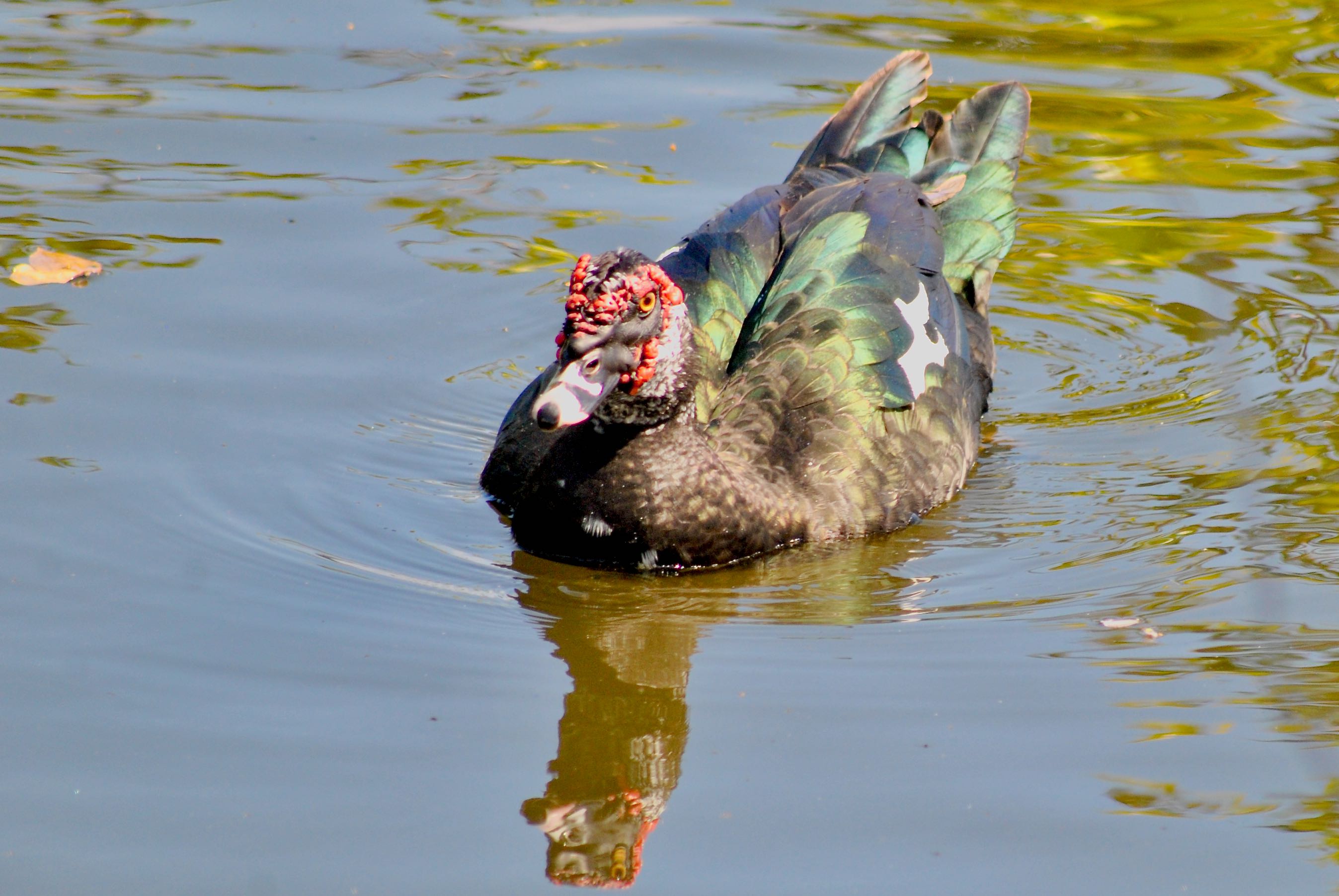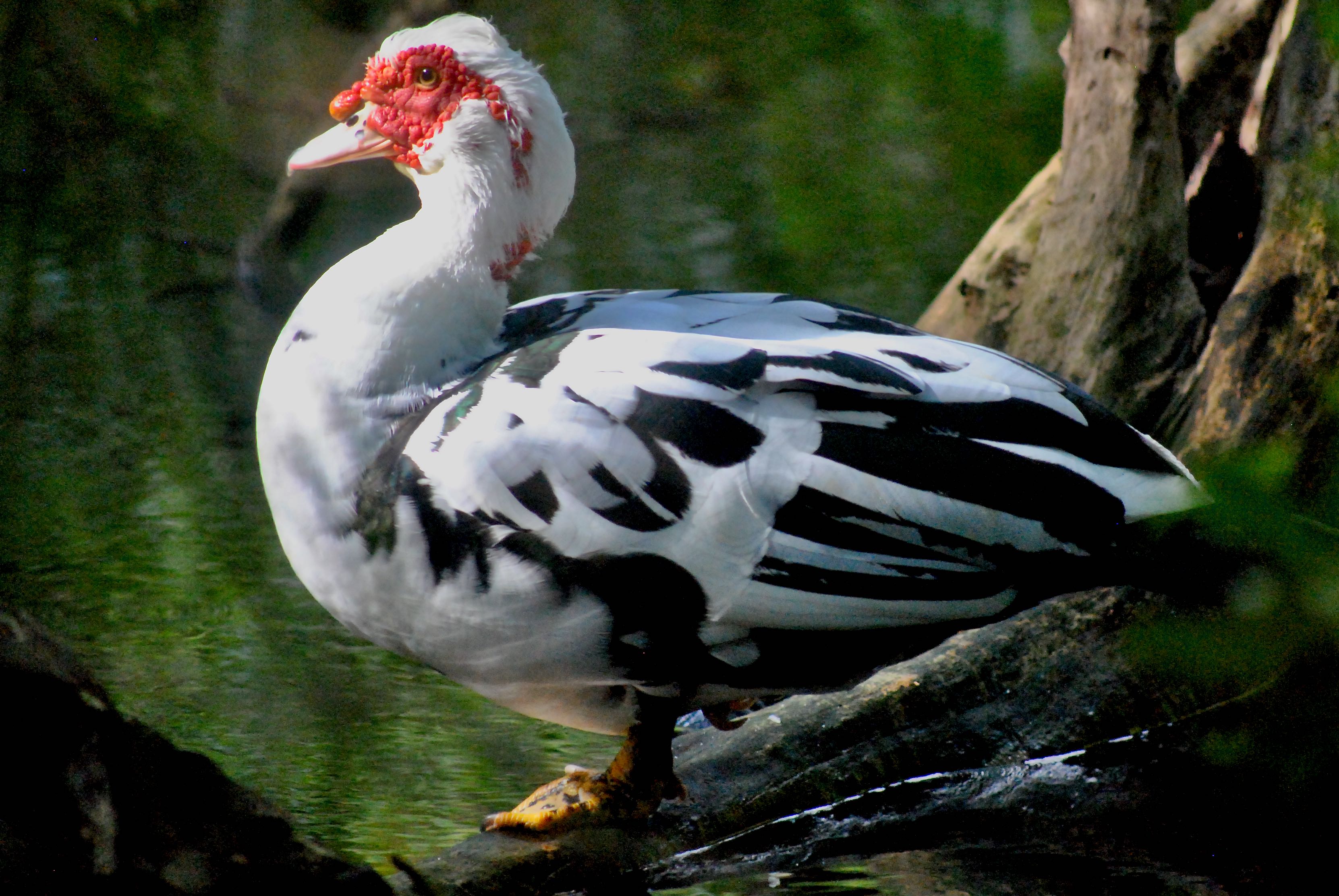
Muscovy duck, photographed near the Boynton Beach Mall, Boynton Beach, Palm Beach County, in October 2013.
With a name like muscovy, you'd think this duck has a Russian connection. You'd be wrong. Probably. Maybe.
Truth is there are various theories as to how this bird got its name: its musky scent; its tendency to eat mosquitos; its origins in Central America on lands inhabited by the Miskito Indians.
And there's the story of the Muscovy Co. of London, which, among other lines of business, imported muscovy ducks into France and England back in the day. Apparently, the company chose the name, Muscovy, because it had aspirations to do business in Russia, but that's about as close to a Russian connection as we can find. In any regard, the muscovy duck, Cairina moschata, is an extremely adaptable bird. Despite tropical origins, it is able to live in cold climates — as far north as Canada.
But the natural range of the muscovy duck only extends only as far north as southern Texas. Domesticated birds were brought to Florida in 1967 as pets in some cases or to be deliberately released into the landscape as a means of adding a splash of color. A quick side note: muscovy ducks are among the oldest domesticated birds in the world; Native Americans had domesticated these ducks before the arrival of the Spanish in the 1500s.
Muscovy ducks have made their way into just about all of Florida's 67 counties. Their presence remains controversial because they compete with native ducks for food and habitat. They also carry diseases that infect native species, and can interbreed with natives as well. But efforts to irradicate the bird are often met with protests by bird lovers. Muscovy ducks are not protected under the Migratory Bird Treaty Act, and as such, are considered fair game literally, assuming they can be taken by otherwise legal means.
Muscovy ducks are now found in urban areas throughout North America. The irony is that even as Muscovy ducks thrive in new territory, they are declining in their native range because of overhunting and loss of habitat. Ducks Unlimited de Mexico started a nest box program some years ago that has helped restore the population. Still, hunting and habitat loss remain as threats.
Their natural range extends southward from the Rio Grande Valley, through Mexico, Central America and South America as far as Argentina and Uraguay.
Muscovy ducks are big, with males weighing as much as 15 pounds, making them the largest of all North American ducks. Females are about half the size. Those warty bumps on the face, called caruncles, distinguish the muscovy from other duck species. They also tend to be more prominent on males than females.
The version of muscovy duck we see has been domesticated — bred for color, feather pattern or for meat. Wild ducks are mostly a glossy black, inhabit wooded rivers and swamps and nest in trees and tree cavities. They come equipped with strong claws. Feral ducks, by comparison, stick to urban settings and the 'burbs, and dig out shallow nests on the ground. Muscovy females lay as many as 16 eggs, which take five weeks to incubate. Females handle all duties when it comes rearing a brood. Hatchlings have sharp claws and a claw-like point at the end of their bill, which they use to make their way out of the nest to the ground. Muscovy ducks are often seen in pairs, though males can have more than one partner.
Wild ducks will munch on various grasses and sedges, seeds and tubers, insects, crustaceans, clams, worms, fish and small reptiles. At times, they'll forage through a farmer's field. Feral ducks eat human food, acorns, seeds, aquatic vegetation and a variety of invertebrates. They're not shy about taking handouts.
Muscovy ducks are members of Anatidae, the family of ducks, swans and geese.



